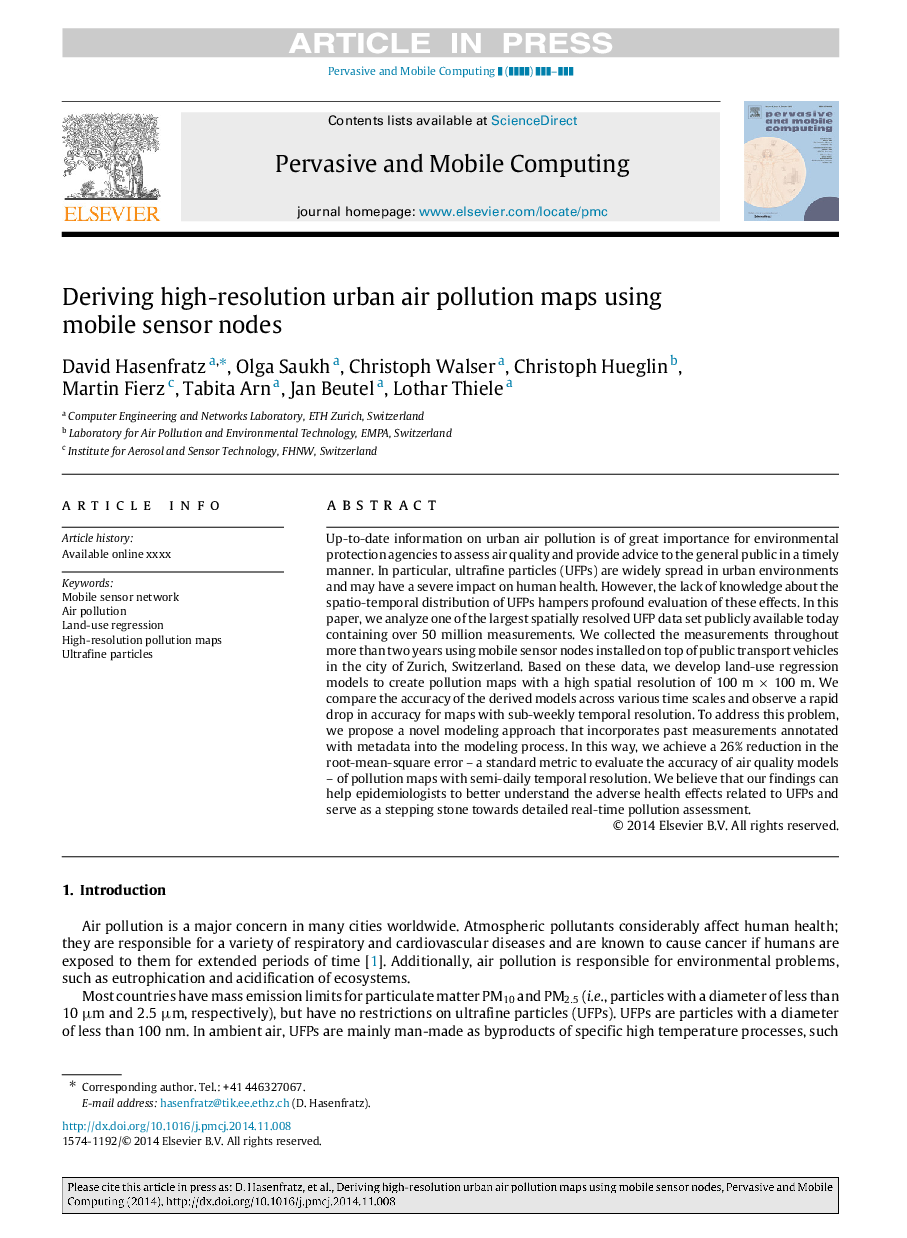| Article ID | Journal | Published Year | Pages | File Type |
|---|---|---|---|---|
| 10344478 | Pervasive and Mobile Computing | 2015 | 18 Pages |
Abstract
Up-to-date information on urban air pollution is of great importance for environmental protection agencies to assess air quality and provide advice to the general public in a timely manner. In particular, ultrafine particles (UFPs) are widely spread in urban environments and may have a severe impact on human health. However, the lack of knowledge about the spatio-temporal distribution of UFPs hampers profound evaluation of these effects. In this paper, we analyze one of the largest spatially resolved UFP data set publicly available today containing over 50 million measurements. We collected the measurements throughout more than two years using mobile sensor nodes installed on top of public transport vehicles in the city of Zurich, Switzerland. Based on these data, we develop land-use regression models to create pollution maps with a high spatial resolution of 100 m Ã 100 m. We compare the accuracy of the derived models across various time scales and observe a rapid drop in accuracy for maps with sub-weekly temporal resolution. To address this problem, we propose a novel modeling approach that incorporates past measurements annotated with metadata into the modeling process. In this way, we achieve a 26% reduction in the root-mean-square error-a standard metric to evaluate the accuracy of air quality models-of pollution maps with semi-daily temporal resolution. We believe that our findings can help epidemiologists to better understand the adverse health effects related to UFPs and serve as a stepping stone towards detailed real-time pollution assessment.
Related Topics
Physical Sciences and Engineering
Computer Science
Computer Networks and Communications
Authors
David Hasenfratz, Olga Saukh, Christoph Walser, Christoph Hueglin, Martin Fierz, Tabita Arn, Jan Beutel, Lothar Thiele,
